carnegie mellon's national high School Game Academy
carnegie mellon's national high School Game Academy
carnegie mellon's national high School Game Academy
Create successful ePaper yourself
Turn your PDF publications into a flip-book with our unique Google optimized e-Paper software.
<strong>Game</strong><br />
<strong>carnegie</strong> mellon’s <strong>national</strong> <strong>high</strong> <strong>School</strong> <strong>Game</strong> <strong>Academy</strong><br />
<strong>carnegie</strong> mellon’s <strong>national</strong> <strong>high</strong> <strong>School</strong> <strong>Game</strong> <strong>Academy</strong><br />
In that time, I would undergo an intense learning<br />
experience alongside 50 students and teachers,<br />
all as passionate about games as I was. I love to<br />
play video games and experience diff erent worlds<br />
through them. I was interested in a career in the<br />
game industry, and I hoped CMU’s High <strong>School</strong><br />
<strong>Game</strong> <strong>Academy</strong> would give me a glimpse of it.<br />
And while I thought I wanted to create art for<br />
games, by the time the summer program ended, I<br />
would fi nd a new passion.<br />
The Art of the <strong>Game</strong><br />
Students focused on either art or programming,<br />
but artists also examined programming, and<br />
programmers explored art. As an aspiring artist,<br />
I focused on art. I attended lectures on choosing<br />
color schemes; creating characters, objects, and<br />
textures; and animating 3D models. To create a<br />
3D model, we used a soft ware program called 3D<br />
Studio Max, manipulating a simple cube to achieve<br />
a desired shape. We edited the object on the screen<br />
by grabbing and moving vertices, edges, and faces.<br />
At the end of all this stretching and shaping, our<br />
simple cube had become a “mesh”—a 3D object<br />
made up of vertices and polygons—that might be<br />
by Rachel Tadeu<br />
Entering Carnegie Mellon University’s (CMU) Entertainment Technology Center, I<br />
didn’t know where to look fi rst. A huge Millennium Falcon hung suspended above<br />
banks of computers. Along one wall was a timeline of technical and video entertainment<br />
with images of antique computers and game arcades. Th e area beyond the elevators looked<br />
like a ship’s main bridge, with buttons that students pressed<br />
to change the lighting from green to purple. Even aft er I had<br />
been there six weeks, that initial feeling of awe never wore off .<br />
anything from a box or<br />
a chair to a shark or a<br />
person.<br />
We used a process<br />
called texturing to add<br />
color and surfaces to<br />
our models, achieved<br />
by creating a 2D map<br />
that is essentially<br />
wrapped around the<br />
3D model. I was excited<br />
to bring texture to my lifeless models, but all the<br />
pulling and stretching I’d done to my cubes had<br />
distorted their internal structure. The 2D map<br />
wouldn’t adhere to my distorted 3D model. It was<br />
frustrating to fi gure out how to make it all work,<br />
but when I was fi nally able to design a burlap bag<br />
of treasure, I was thrilled.<br />
We then learned to assemble multiple objects<br />
in order to create a cohesive environment. Given<br />
a computer fi le containing a prefabricated cave—<br />
basically a few rooms connected by a hallway—we<br />
used 3D Studio Max to transform it, creating a<br />
story with objects we built and placed in it. To<br />
tell a story of an egotistical king, I added a grand<br />
entrance and a storage room filled with gold,<br />
scrolls, and barrels. Th e largest room housed a<br />
giant throne with a red carpet leading to it and a<br />
large mirror in front of it.<br />
Lights, Camera, Perspective!<br />
In design lectures, we examined game genres,<br />
such as action/adventure and fi rst-person shooter.<br />
We learned how music and sound contribute to<br />
the mood and experience of a game, and studied<br />
how light is used. For example, red light that casts<br />
a lot of shadows creates a sinister mood, while yellows<br />
and whites are more welcoming. Using 3D<br />
Studio Max, we experimented with light sources,<br />
12 imagine Jan/Feb 2010
maker<br />
colors, and brightness levels, controlled how far<br />
the light spread, and made it fl icker (or not).<br />
Now that we could create scenes, we learned<br />
to capture them with a virtual camera. With<br />
3D Studio Max, you press a button to place the<br />
camera strategically within your setting, lending<br />
perspective and mood to the environment.<br />
Depending on the eff ect you’re aft er, you turn<br />
the camera, adjust the lens, or zoom in. The<br />
camera might pan across a landscape, move in<br />
for a close-up, or capture the scene from over<br />
a character’s shoulder. You can also plant the<br />
camera in a character’s head for a fi rst-person<br />
perspective. <strong>Game</strong>s oft en have multiple cameras<br />
so players can toggle through them to choose the<br />
perspective they like best.<br />
The Language of Programming<br />
Simply put, programming is using another language<br />
to communicate to the computer what you<br />
want it to do. I learned to program an environment<br />
for the objects I’d designed, first using Python<br />
and then a game engine, a soft ware program that<br />
streamlines the process of creating a game.<br />
To make a game from scratch, you have<br />
to write code for everything: creatures and<br />
characters, rocks, grass, trees, water, and their<br />
eff ects and animations, as well as background<br />
scenery and man-made items like tables, rugs,<br />
and houses. Th e game engine I used, Neverwinter<br />
Nights 2, had eff ects, objects, scenery, and animations<br />
already created and coded, so I had<br />
only to create the environment and then place<br />
the objects and characters in the environment<br />
to build a game. While I had thought I wanted<br />
to create art from scratch, I soon realized that<br />
what I loved most was creating environments<br />
and designing rooms and levels.<br />
Level design is the art of creating the locales<br />
and stages that defi ne game play. In a board game,<br />
if you were to change the layout of the board, you<br />
would also change the game. In video games,<br />
level design is critical to the function of the game;<br />
when a level is changed, the game changes with it.<br />
Putting It All Together<br />
For the last two weeks of the program, we<br />
worked in teams to create a game. On my team,<br />
I was one of nine students whose job it was to<br />
make a game using only Neverwinter Nights 2.<br />
We created a time-warping game in which the<br />
player lives in a town that is under attack. Sent<br />
by a wizard into the future, the player has to fi nd<br />
the wizard again to return to the past, where he<br />
or she can either save the town or pillage it. My<br />
team worked well together, but when it came<br />
time to transfer our project to the teacher’s<br />
inbox, the game wouldn’t open. I learned to save<br />
oft en and in multiple places—on the computer,<br />
on a pen drive, and in multiple fi les—so if one<br />
fi le got corrupted, I had backups.<br />
Toward the end of the program, a few of<br />
us decided to stay in touch to continue making<br />
games. Our fi rst goal was to create a simple game<br />
to get the feel of working over long distances as a<br />
team. In this game—which is still a work in progress—the<br />
player is a character trapped in a dark<br />
alley and has to fi nd a way out in order to win.<br />
In addition to that game, I’m creating a game for<br />
independent study at school. My written proposal<br />
has been accepted, and now I’ll have the challenge<br />
of meeting the deadlines to design, create, and program<br />
the entire game—just like a game designer.<br />
Th anks to the training I received last summer, I<br />
feel confi dent that I can do it. i<br />
rachel tadeu is a<br />
senior at the Bullis<br />
<strong>School</strong> in Potomac,<br />
Md. in addition to<br />
gaming, rachel enjoys<br />
creating art and is<br />
building the set for her<br />
school play.<br />
www.cty.jhu.edu/imagine imagine 13


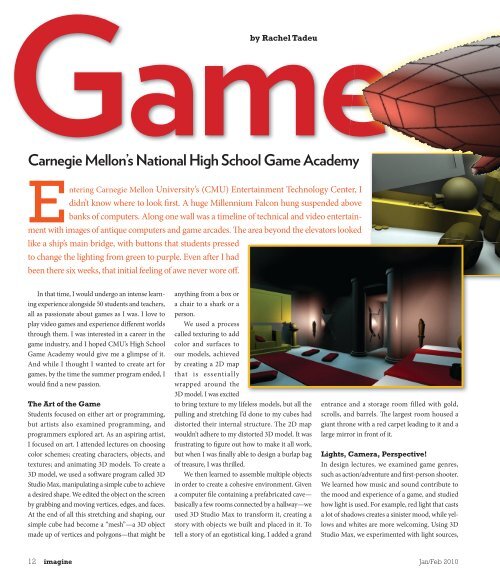


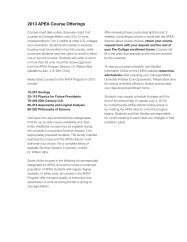

![Pittsburgh Neighborhoods [.pdf] - Carnegie Mellon University](https://img.yumpu.com/22011290/1/190x115/pittsburgh-neighborhoods-pdf-carnegie-mellon-university.jpg?quality=85)
![Curriculum Vitae [.pdf] - Carnegie Mellon University](https://img.yumpu.com/20737100/1/190x245/curriculum-vitae-pdf-carnegie-mellon-university.jpg?quality=85)
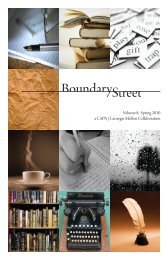
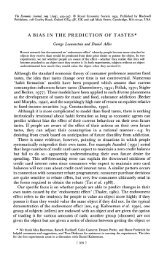
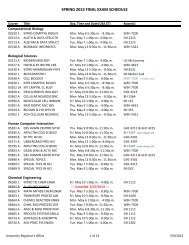
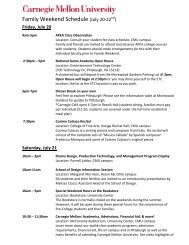
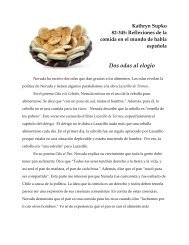


![May 2012 [.pdf] - Carnegie Mellon University](https://img.yumpu.com/12198417/1/190x253/may-2012-pdf-carnegie-mellon-university.jpg?quality=85)
